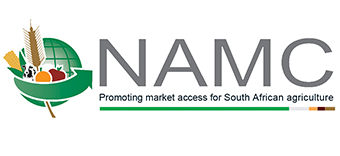MAIZE AND SOYBEAN CROP OUTLOOK FOR SOUTH AFRICA’S 2024/2025 SEASON: RECOVERY SIGNS AMIDST WEATHER AND MARKET CHALLENGES
By: Ms. Thandeka Ntshangase, Dr. Moses Lubinga and Dr. Victor Thindisa
Following a challenging 2023/2024 summer crop season in which South Africa’s grains and oilseeds production fell by 24% year-on-year (y-o-y) to 15.4 million tons, a rebound period may be on the horizon. According to statistics issued by the Crop Estimates Committee (CEC) on January 29, farmers intended to plant 4.47 million hectares of summer grains and oilseeds in 2024/2025 season and the preliminary area planted is estimated to be 4.45 million hectares. The difference is largely attributed to soybeans for which planting was unsatisfactory with a difference of 2.4% from the previous year. The decreased area planted is from the Free State (highest producing area), Mpumalanga and KwaZulu Natal (KZN). The preliminary area planted for white maize is projected at 1.59 million hectares (up by 2.9% from the previous year), and yellow maize is at 1.05 million hectares (down by 3.2% year-on-year). The three main maize producing provinces, namely the Free State, Mpumalanga and North West are expected to produce 79% of the 2025 crop, similar to the 2024 crop.
The Supply and Demand Estimates Committee (S&DEC) predicts that the overall supply for January 2025 is comparable to 15 million tons, which is equivalent to a 17% decrease from the final supply estimates of the 2023/24 season. Maize exports in 2024/2025 season as reported by the S&DEC are predicted to reach 2 640 000 tons. The estimated rise is mostly due to an increase in whole maize exports from both white and yellow maize. Despite recent notification from Namibia and Botswana of the short-lived ban of maize imports. The ban had insignificant impact on the export’s quantity of maize. It was noted that there is still a high demand for maize from Botswana, Lesotho, Namibia and Swaziland, and more so an increased demand from Zimbabwe, partly due to a decrease in their production this season. There has been a notable 8.6% increase in imports, largely driven by an increase in yellow maize and a significant estimate of white maize imports of 68 000 tons, but the estimates slightly decreased by 2.8% from the previous month. One of the key reasons for the sustained consumption of maize, more specifically white maize, is it being a staple food for most of the country’s population. A majority of South Africans rely on maize as a primary source of food given that it is a more relatively affordable option. The availability of total maize stock in 2024/2025 is predicted to be 21 days This implies that the projected maize stocks for 30 April 2025 is estimated at 664 832 tons. Therefore, this suggests that there could be a need to facilitate more trade to ensure that the country is well cushioned in case of further unexpected shocks.
Soybean production is amongst the most popular grain crops in South Africa and when it comes to planted area and yield, soya bean offers both economic opportunities and essential nutritional resources. The CECs intentions had reported an increase in the area to be planted for soybean for the 2024/2025 season (1 153 200 ha) in comparison to last season (1 150 500 ha), however due to some challenges, such as the erratic rainfall at the start of the planting season, the preliminary area planted dropped to 1 122 500 ha. According to the S&DEC, the total supply for soybeans is projected to reach 2.2 million tons for 2024/25 season while exports are estimated to reach 295 000 tons, of which 155 000 tons are soybeans products and 140 000 tons are whole soybeans. On the other hand, imports are estimated to reach 150 000 tons.
In conclusion, despite concerns about the El Niño weather phenomena that was experienced prior at the commencement of the planting season, coupled with the La Niña rains experienced later in the season, notwithstanding the fact that La Niña rains were late and erratic in some parts of Mpumalanga, Limpopo and the Free State, the 2024 summer crop plantings appear to be larger than anticipated. Thus, the overall agricultural production conditions promise to be better than what was realised from the 2023/2024 season, and the maize stock levels are bound to rise above the benchmark.



